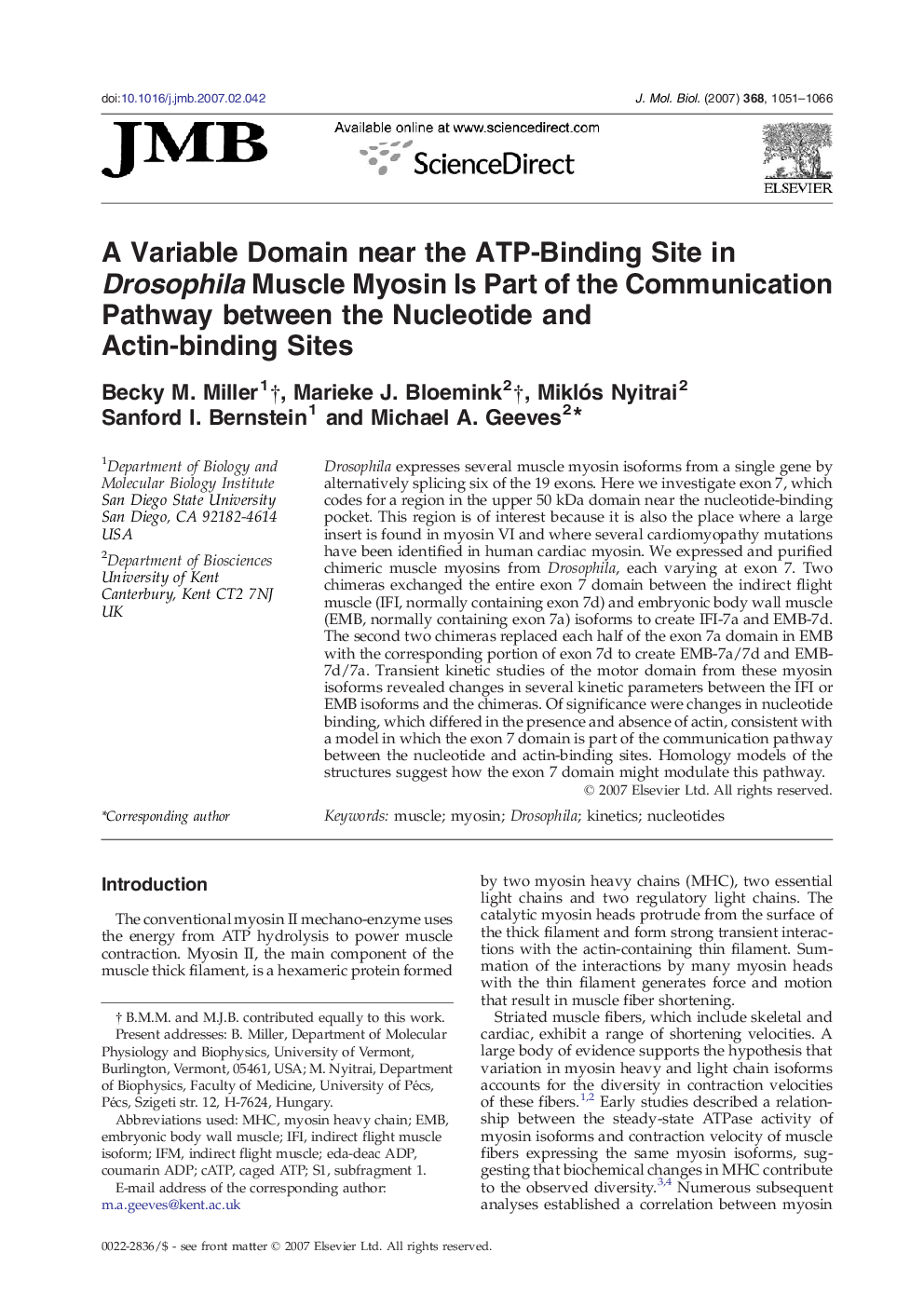| Article ID | Journal | Published Year | Pages | File Type |
|---|---|---|---|---|
| 2188392 | Journal of Molecular Biology | 2007 | 16 Pages |
Drosophila expresses several muscle myosin isoforms from a single gene by alternatively splicing six of the 19 exons. Here we investigate exon 7, which codes for a region in the upper 50 kDa domain near the nucleotide-binding pocket. This region is of interest because it is also the place where a large insert is found in myosin VI and where several cardiomyopathy mutations have been identified in human cardiac myosin. We expressed and purified chimeric muscle myosins from Drosophila, each varying at exon 7. Two chimeras exchanged the entire exon 7 domain between the indirect flight muscle (IFI, normally containing exon 7d) and embryonic body wall muscle (EMB, normally containing exon 7a) isoforms to create IFI-7a and EMB-7d. The second two chimeras replaced each half of the exon 7a domain in EMB with the corresponding portion of exon 7d to create EMB-7a/7d and EMB-7d/7a. Transient kinetic studies of the motor domain from these myosin isoforms revealed changes in several kinetic parameters between the IFI or EMB isoforms and the chimeras. Of significance were changes in nucleotide binding, which differed in the presence and absence of actin, consistent with a model in which the exon 7 domain is part of the communication pathway between the nucleotide and actin-binding sites. Homology models of the structures suggest how the exon 7 domain might modulate this pathway.
